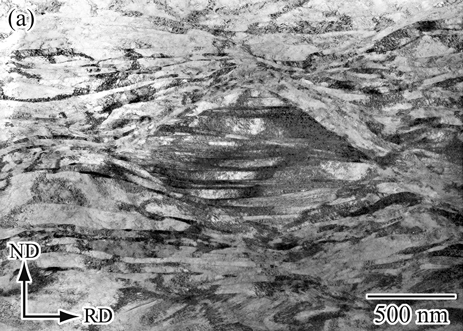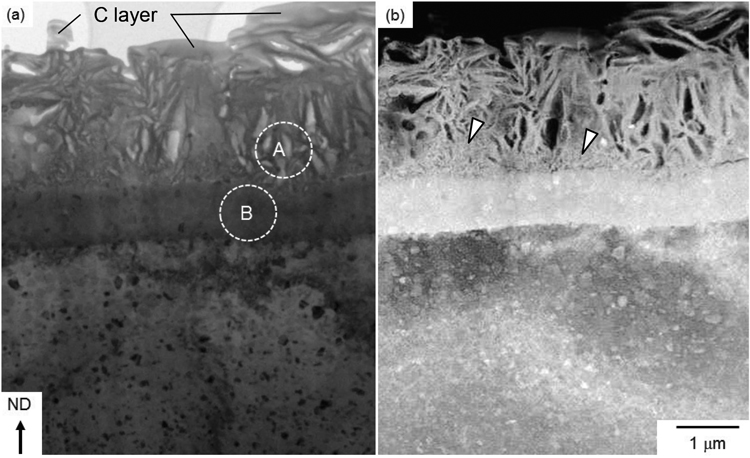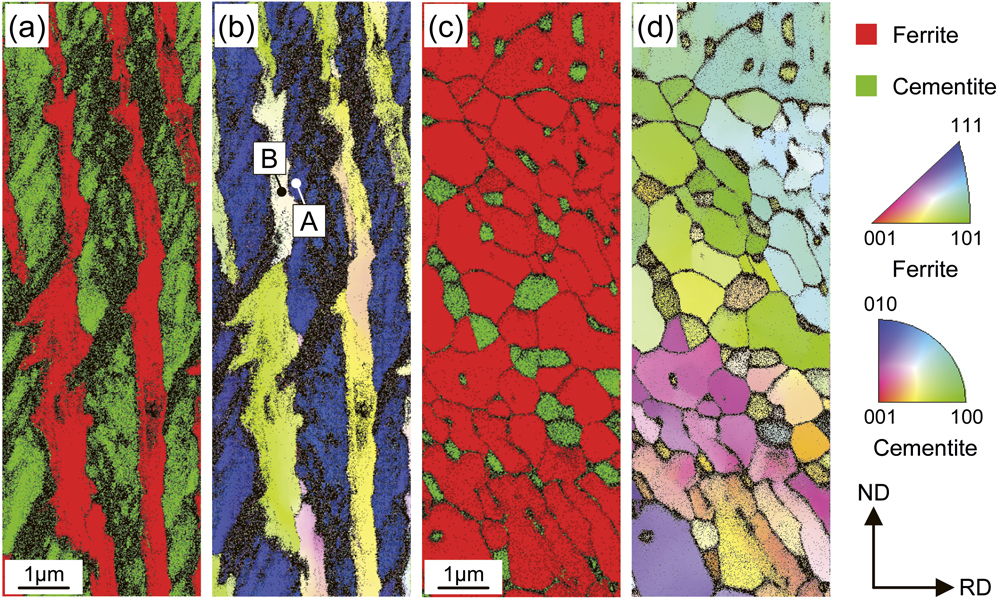特集号: 鉄と鋼
105 巻, 2 号
特集号「革新的構造用金属材料創製を目指したヘテロ構造制御に基づく新指導原理の構築」
選択された号の論文の28件中1~28を表示しています
- |<
- <
- 1
- >
- >|
出版情報
-
2019 年 105 巻 2 号 p. Cover-
発行日: 2019/02/01
公開日: 2019/01/31
PDF形式でダウンロード (666K) -
2019 年 105 巻 2 号 p. Contents-
発行日: 2019/02/01
公開日: 2019/01/31
PDF形式でダウンロード (812K) -
2019 年 105 巻 2 号 p. Editorial-
発行日: 2019/02/01
公開日: 2019/01/31
PDF形式でダウンロード (228K)
巻頭言
-
2019 年 105 巻 2 号 p. 123
発行日: 2019年
公開日: 2019/01/31
PDF形式でダウンロード (219K) HTML形式で全画面表示
寄書
-
2019 年 105 巻 2 号 p. 124-126
発行日: 2019年
公開日: 2019/01/31
PDF形式でダウンロード (834K) HTML形式で全画面表示
レビュー
-
2019 年 105 巻 2 号 p. 127-145
発行日: 2019年
公開日: 2019/01/31
[早期公開] 公開日: 2018/10/03PDF形式でダウンロード (9554K) HTML形式で全画面表示
論文
-
2019 年 105 巻 2 号 p. 146-154
発行日: 2019年
公開日: 2019/01/31
[早期公開] 公開日: 2018/11/01PDF形式でダウンロード (3154K) HTML形式で全画面表示 -
2019 年 105 巻 2 号 p. 155-162
発行日: 2019年
公開日: 2019/01/31
PDF形式でダウンロード (4123K) HTML形式で全画面表示 -
2019 年 105 巻 2 号 p. 163-172
発行日: 2019年
公開日: 2019/01/31
PDF形式でダウンロード (2921K) HTML形式で全画面表示 -
2019 年 105 巻 2 号 p. 173-181
発行日: 2019年
公開日: 2019/01/31
PDF形式でダウンロード (5942K) HTML形式で全画面表示 -
2019 年 105 巻 2 号 p. 182-189
発行日: 2019年
公開日: 2019/01/31
PDF形式でダウンロード (4054K) HTML形式で全画面表示 -
2019 年 105 巻 2 号 p. 190-196
発行日: 2019年
公開日: 2019/01/31
PDF形式でダウンロード (2378K) HTML形式で全画面表示 -
2019 年 105 巻 2 号 p. 197-206
発行日: 2019年
公開日: 2019/01/31
[早期公開] 公開日: 2018/12/14PDF形式でダウンロード (4743K) HTML形式で全画面表示
レビュー
-
2019 年 105 巻 2 号 p. 207-214
発行日: 2019年
公開日: 2019/01/31
PDF形式でダウンロード (7588K) HTML形式で全画面表示
論文
-
2019 年 105 巻 2 号 p. 215-221
発行日: 2019年
公開日: 2019/01/31
PDF形式でダウンロード (4658K) HTML形式で全画面表示 -
2019 年 105 巻 2 号 p. 222-230
発行日: 2019年
公開日: 2019/01/31
PDF形式でダウンロード (5592K) HTML形式で全画面表示 -
2019 年 105 巻 2 号 p. 231-239
発行日: 2019年
公開日: 2019/01/31
[早期公開] 公開日: 2018/11/21PDF形式でダウンロード (4243K) HTML形式で全画面表示
レビュー
-
2019 年 105 巻 2 号 p. 240-253
発行日: 2019年
公開日: 2019/01/31
PDF形式でダウンロード (5920K) HTML形式で全画面表示
論文
-
2019 年 105 巻 2 号 p. 254-261
発行日: 2019年
公開日: 2019/01/31
PDF形式でダウンロード (6315K) HTML形式で全画面表示 -
2019 年 105 巻 2 号 p. 262-271
発行日: 2019年
公開日: 2019/01/31
PDF形式でダウンロード (5054K) HTML形式で全画面表示 -
2019 年 105 巻 2 号 p. 272-281
発行日: 2019年
公開日: 2019/01/31
PDF形式でダウンロード (9045K) HTML形式で全画面表示 -
2019 年 105 巻 2 号 p. 282-289
発行日: 2019年
公開日: 2019/01/31
[早期公開] 公開日: 2018/10/06PDF形式でダウンロード (8192K) HTML形式で全画面表示 -
2019 年 105 巻 2 号 p. 290-298
発行日: 2019年
公開日: 2019/01/31
[早期公開] 公開日: 2018/12/18PDF形式でダウンロード (2543K) HTML形式で全画面表示 -
2019 年 105 巻 2 号 p. 299-304
発行日: 2019年
公開日: 2019/01/31
PDF形式でダウンロード (3106K) HTML形式で全画面表示 -
2019 年 105 巻 2 号 p. 305-313
発行日: 2019年
公開日: 2019/01/31
PDF形式でダウンロード (1706K) HTML形式で全画面表示 -
2019 年 105 巻 2 号 p. 314-323
発行日: 2019年
公開日: 2019/01/31
PDF形式でダウンロード (4682K) HTML形式で全画面表示 -
2019 年 105 巻 2 号 p. 324-333
発行日: 2019年
公開日: 2019/01/31
PDF形式でダウンロード (5039K) HTML形式で全画面表示 -
2019 年 105 巻 2 号 p. 334-342
発行日: 2019年
公開日: 2019/01/31
PDF形式でダウンロード (1132K) HTML形式で全画面表示
- |<
- <
- 1
- >
- >|





